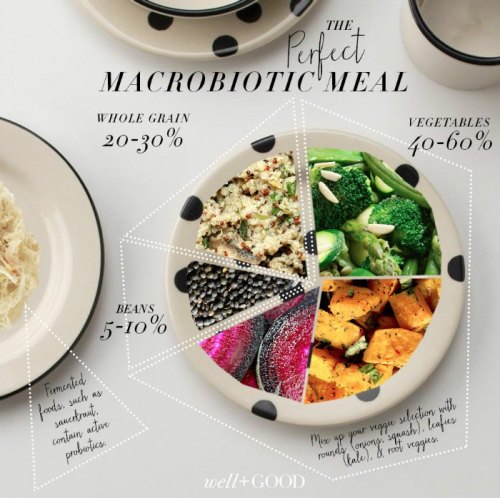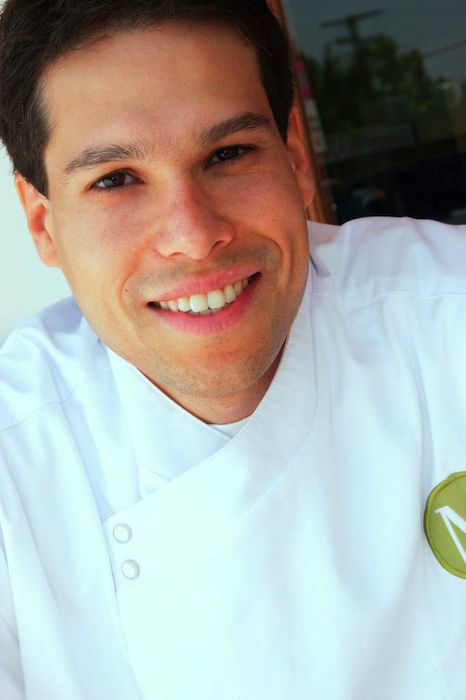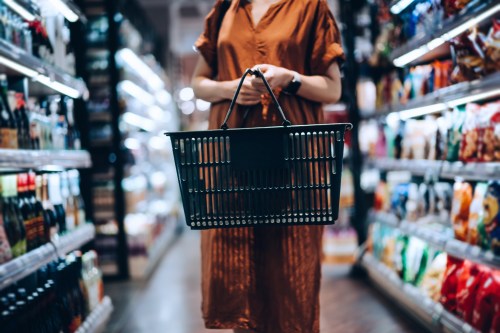
Have you ever spied a stunning bowl of grains and vegetables on Instagram and wondered a) what in world of deliciousness is that? And b) how you could have some, too?
Whatever it was, we’re betting it has roots in Macrobiotics, a healthy way of eating that gained major popularity stateside in the ’90s. Although it lacks the trendiness of some current nutrition crazes, the Macrobiotic Diet has informed tons of others, like vegetarian, South Beach, and even Paleo itself. But what, exactly, is it all about?
Chef Lee Gross is here to explain, and teach you how to whip up a perfect macro bowl at home. Gross, who worked as Gwyneth Paltrow’s personal chef, is now the consulting chef at Los Angeles’ M Cafe, which is known for its menu of macrobiotic dishes, plates, and bowls.
What is Macrobiotics and the Macrobiotic Diet? A lot of the principles and teachings have been taken from Traditional Chinese Medicine, as well as Japanese traditions, explains Gross.

“Macrobiotics is about balancing ourselves with the natural world—and the easiest way to do that is with our meals. We get further and further away from this balance if we choose [to eat] processed industrialized foods,” he says.
Gross was actually thinking about joining the PeaceCorps in 1998 when he learned about Macrobiotics at the Omega Institute and Michio Kushi, who is credited with bringing Macrobiotics to the West, at the Kushi Institute. Once he discovered the diet’s focus on eating mindfully, “my whole profession and perspective on food shifted,” he says.
What’s the foundation of a Macrobiotic meal (or macro bowl)? Each meal is a combination of grains, vegetables, beans or fish, and fermented foods. The bowl part, however, is optional. “Taking a macrobiotic meal and putting it into a bowl is just for the convenience factor,” Gross says. But hey, it sure it pretty enjoyable and photogenic this way.
So…how can you make one? Gross admits that while there’s no “correct” breakdown for a Macro meal, he has some suggestions for making the most delicious, well-rounded one possible.
1. Start with a whole grain that makes up about 20 to 30 percent of your plate. It could be anything from quinoa to brown rice to millet. Kushi’s original recommendation called for 40 to 60 percent of grains, but lately people have been lowering the amount of grains and upping the veggies, he says.
2. Vegetables can make up about 40 to 60 percent of your plate or bowl, Gross says. Within that it’s important to have three categories of vegetables—round (like onions or squash), leafy (like kale), and root veggies. How the vegetables are prepared fall into two categories: quick cooked via steaming or sautéing, and long cooked, like stewing.
3. Beans, soy protein, and sea vegetables can comprise about 5 to 10 percent of your plate or bowl. Think: tempeh or tofu. Plus sea vegetables like nori, hiziki, a wild Maine kelp, and dulse. “They’re an important and often overlooked source of valuable nutrients and trace minerals,” explains Gross.
4. It’s important to also include fermented foods, like naturally fermented pickles, explains Gross, “instead of brined pickles, which do not contain active probiotics.”
5. Soup is another thing you can add to your macro plate or bowl. “You can experiment by adding a miso soup or kombu soup broth during the winter months for an instant stew-like macro bowl,” Gross says. “You can also change up the routine and make it a noodle bowl by swapping the whole grain for buckwheat soba or udon noodles.” —Molly Gallagher
For more information, visit www.mcafedechaya.com
Sign Up for Our Daily Newsletter
Get all the latest in wellness, trends, food, fitness, beauty, and more delivered right to your inbox.
Got it, you've been added to our email list.










